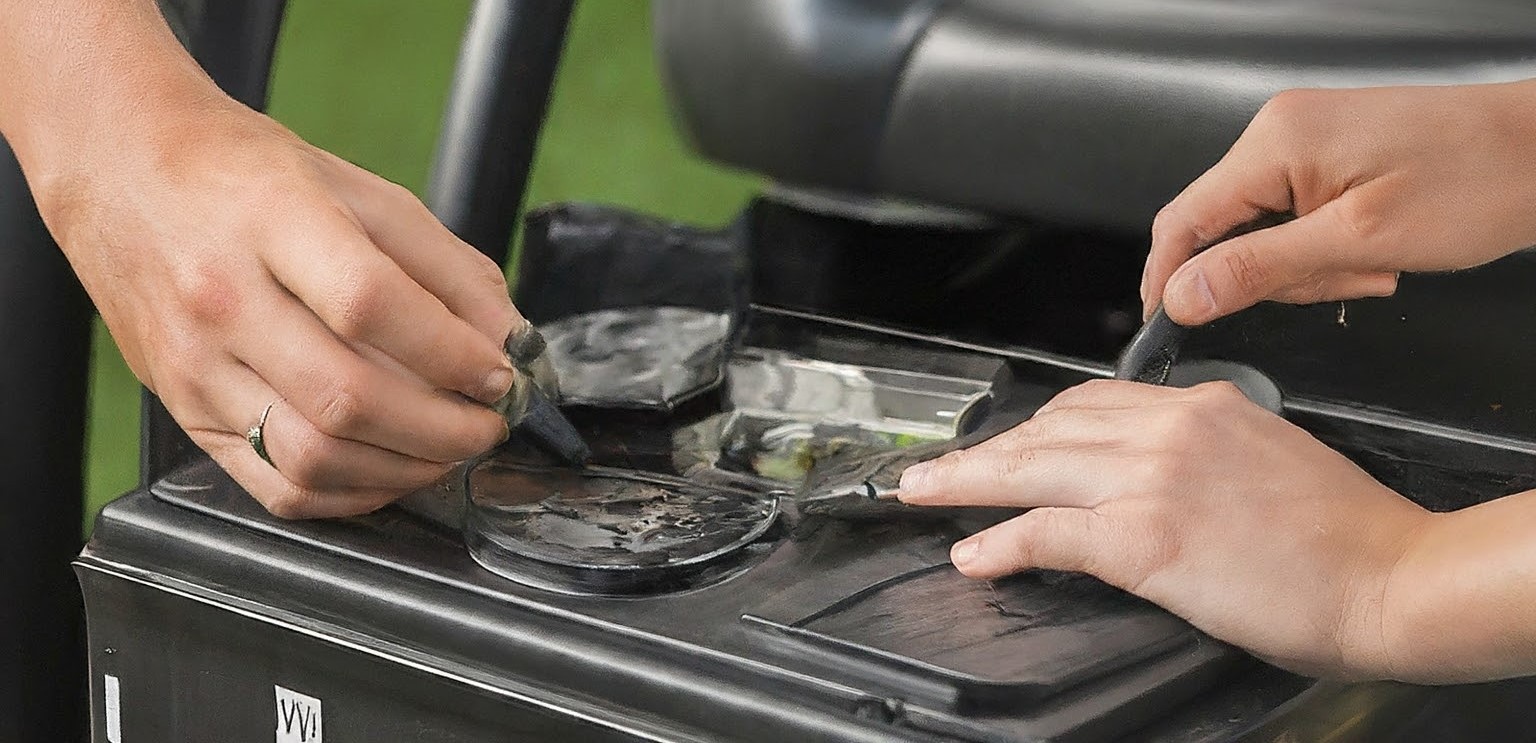Last updated on February 4th, 2024 at 02:33 pm
Golf carts have evolved from being mere vehicles on the greens to becoming a popular mode of transportation in many communities. The heart of these vehicles is their battery. The efficiency, longevity, and performance of a golf cart largely hinge on its battery.
This guide delves deep into the golf cart batteries, offering insights based on our team recent research to help you select the right battery, maintain it effectively, and understand the myriad charging options available.
1. Types of Golf Cart Batteries
There are primarily three types of batteries used in golf carts:
a. Flooded Lead Acid (FLA) Batteries
- Description: Traditional wet-cell batteries where the plates are submerged in an electrolyte solution.
- Pros: More affordable and can have a longer lifespan with proper maintenance.
- Cons: Require regular maintenance, such as topping up with distilled water.
b. Absorbent Glass Mat (AGM) Batteries
- Description: The electrolyte is absorbed in a fiberglass mat, making them spill-proof.
- Pros: Maintenance-free, spill-proof, and have a faster recharge rate.
- Cons: Typically pricier than FLA batteries.
c. Lithium Batteries
- Description: These batteries have seen a surge in popularity due to their lightweight nature and high energy density.
- Pros: Longer lifespan, faster charging, and increased range.
- Cons: More expensive upfront, but operational savings can offset the initial cost.
2. Maintenance of Golf Cart Batteries
To ensure the longevity of your golf cart battery, proper maintenance is paramount:
a. Regular Inspection: Check for signs of damage, corrosion, or leaks. Clean the terminals using a mixture of baking soda and water to prevent corrosion.
b. Distilled Water Top-Up: For FLA batteries, ensure the water level is just above the plates. Always use distilled water to avoid mineral buildup.
c. Equalizing Charge: Once a month, perform an equalizing charge to balance the cells and remove sulfate from the plates.
d. Avoid Deep Discharges: Deep discharging can reduce the lifespan of the battery. Aim to recharge the battery when it reaches 50% discharge.
Also Read: Golf Cart Regular Maintenance
3. Charging Solutions for Golf Cart Batteries
Charging your golf cart battery correctly can significantly enhance its performance and longevity:
a. Use the Right Charger: Ensure you use a charger designed specifically for your battery type. For instance, AGM and Gel batteries require different charging profiles than FLA batteries.
b. Smart Chargers: These chargers detect the battery’s state and adjust the charging rate accordingly, preventing overcharging.
c. Solar Charging: Solar-powered golf carts not only improve the lifespan of the battery but also conserve energy and reduce CO2 emission.
d. Temperature Considerations: Batteries charge best at room temperature. Avoid charging in extremely cold or hot conditions.
4. Environmental Considerations
With the increasing focus on sustainability, it’s essential to consider the environmental impact of batteries:
a. Lifecycle Analysis: Lithium-ion batteries, for instance, have been shown to be more environmentally friendly for electric vehicles compared to other types.
b. Recycling: As the demand for golf cart batteries grows, there’s a burgeoning opportunity for businesses to recycle retired batteries.
Key differences Between three types of golf cart batteries
| Types | Cost | Maintenance | Lifespan |
|---|---|---|---|
| Lead acid | Inexpensive | More | Shorter |
| Lithium ion | More expensive | Less | Longer |
| AGM | More expensive than flooded lead acid | Less than flooded lead acid | Longer than flooded lead acid |
- Lead acid batteries: These are the most common type of golf cart battery. They are relatively inexpensive and easy to find, but they require more maintenance than lithium ion batteries and have a shorter lifespan.
- Lithium ion batteries: These are a newer type of golf cart battery that is becoming increasingly popular. They have a longer lifespan than lead acid batteries and require less maintenance, but they are more expensive.
- AGM batteries: These are a type of lead acid battery that is more resistant to vibration and shock than flooded lead acid batteries. They also do not produce hydrogen gas when they are charging, so they do not need to be ventilated as carefully.
The best type of golf cart battery for you will depend on your specific needs and budget. If you are looking for the most affordable option, then a lead acid battery is a good choice. If you want a battery that requires less maintenance and has a longer lifespan, then a lithium ion battery is a better option.
Conclusion
The battery is the lifeblood of your golf cart. With the right knowledge, based on recent research, you can make informed decisions about selecting, maintaining, and charging your golf cart battery.
Whether you’re a casual golfer or use your cart for daily commutes, understanding and caring for your battery is crucial for optimal performance.
Samantha Green is a golf expert who helps golfers improve their game by giving advice and suggestions on accessories.



1 thought on “Golf Cart Batteries: Types, Maintenance & Charging Solutions”